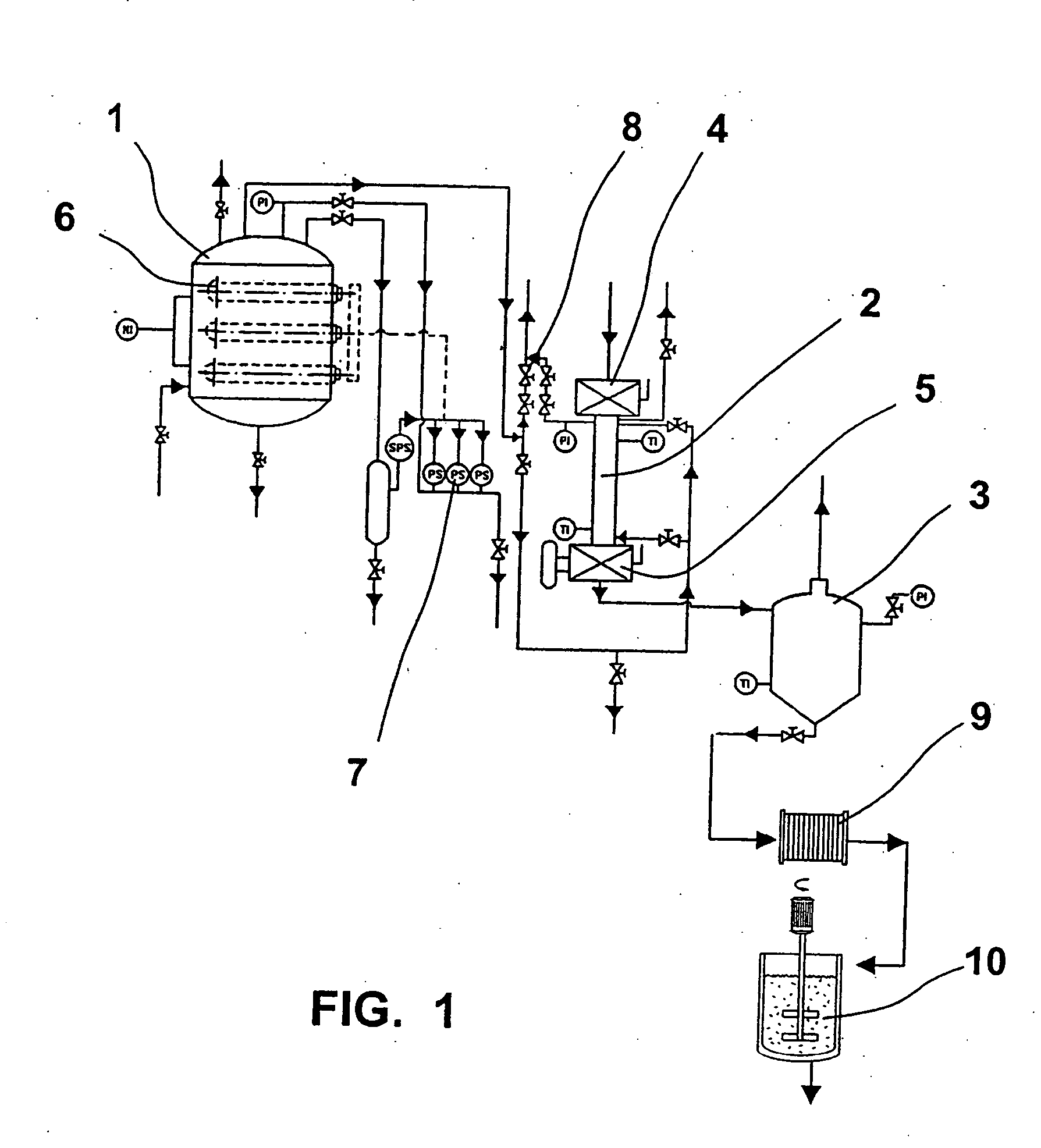Procedure for the production of ethanol from lignocellulosic biomass using a new heat-tolerant yeast
a technology of lignocellulosic biomass and heat-tolerant yeast, which is applied in the direction of biofuels, microorganisms, biochemical apparatus and processes, etc., can solve the problems of high cost of processing, obstacle to fermentation, and carbohydrates not directly accessible to hydrolytic enzymes
- Summary
- Abstract
- Description
- Claims
- Application Information
AI Technical Summary
Benefits of technology
Problems solved by technology
Method used
Image
Examples
Embodiment Construction
The procedure covered by this invention is a discontinuous procedure to obtain ethanol from lignocellulosic biomass, which includes a steam explosion pre-treatment and the simultaneous saccharification (by means of commercial cellulases) and fermentation (using a new heat-tolerant yeast, particularly Kluyveromyces marxianus CECT 10875) of cellulose to ethanol. The process is carried out at 42° C. Shaking at 150 rpm and treatment time is 72 h. After the pre-treatment, 1,000 g of biomass with a cellulose content of 30-40% (not susceptible to an enzyme attack) gives 270-360 g of cellulose susceptible of being hydrolysed. This cellulose is transformed by means of a SSF process in 90-120 g of ethanol.
BRIEF DESCRIPTION OF THE DRAWINGS
To complete the previous description, and with a view to providing a better understanding of the characteristics of the invention, there will be a detailed description of a preferred embodiment, based on a set of orientative but not restrictive drawings th...
PUM
| Property | Measurement | Unit |
|---|---|---|
| temperature | aaaaa | aaaaa |
| temperature | aaaaa | aaaaa |
| pressure | aaaaa | aaaaa |
Abstract
Description
Claims
Application Information
 Login to View More
Login to View More - R&D
- Intellectual Property
- Life Sciences
- Materials
- Tech Scout
- Unparalleled Data Quality
- Higher Quality Content
- 60% Fewer Hallucinations
Browse by: Latest US Patents, China's latest patents, Technical Efficacy Thesaurus, Application Domain, Technology Topic, Popular Technical Reports.
© 2025 PatSnap. All rights reserved.Legal|Privacy policy|Modern Slavery Act Transparency Statement|Sitemap|About US| Contact US: help@patsnap.com

